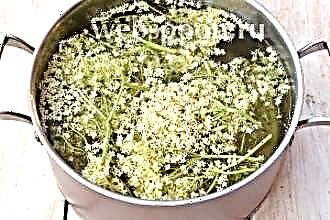A runny nose is always accompanied by nasal congestion and the release of nasal secretions of various consistencies in different quantities. This is one of the most unpleasant manifestations of colds, allergic diseases and a number of other pathologies - both infectious and non-infectious etiology. When a person is forced to breathe through the mouth due to difficulty in nasal breathing, this not only creates inconvenience, but also causes a deterioration in the general condition. Dizziness, headache appear, a decrease in the ability to concentrate is noted. In addition, the air entering through the mouth is not cleaned or warmed up properly, and the mucous membrane of the mouth dries up. When the nose is stuffy, the drops do not help, what should I do? How can you make breathing easier in this case?
Causes of congestion
 One of the remedies for congestion is nasal drops, but what if they turn out to be ineffective? To achieve a satisfactory result in the fight against drug-resistant rhinitis, you need to understand what causes its occurrence. Why vasoconstrictor drops do not work? This can be explained by such reasons as:
One of the remedies for congestion is nasal drops, but what if they turn out to be ineffective? To achieve a satisfactory result in the fight against drug-resistant rhinitis, you need to understand what causes its occurrence. Why vasoconstrictor drops do not work? This can be explained by such reasons as:
- The development of medication rhinitis.
- Development of chronic hypertrophic rhinitis.
- Dry and dusty premises.
Vasoconstrictor drops, also called topical nasal decongestants, quickly relieve swelling and reduce mucus secretion. Although decongestants do not treat the common cold, they successfully cope with its key manifestations, therefore they are extremely popular among patients and are included in the prescription standards for rhinitis, sinusitis and otitis media as symptomatic drugs. However, with all the advantages of vasoconstrictor drugs, there are many disadvantages. And one of the most unpleasant is the provocation of the inflammatory process and the development of drug-induced rhinitis with prolonged use of drops. In this case, the critical period is the period of application over 10-15 days.
Rhinitis medicamentosa is a common cause of persistent, decongestant-resistant rhinitis.
The nose is stuffy - drops do not help. This is how you can briefly describe the clinical picture. The pathogenesis is based on dysfunction of the neuromuscular apparatus of the vessels of the mucous membrane, which leads to stagnation of blood in the turbinates. The patient has a constant need for decongestant, but cannot get the same effect of breathing relief even after frequent use.
In chronic hypertrophic rhinitis, hypertrophy of the intranasal elements is observed - mainly the nasal concha. The more the nasal passages are narrowed, the more difficult it is for the patient to breathe. The effectiveness of vasoconstrictors is also gradually decreasing.
Dry, hot air and dustiness contribute to the drying out of the nasal mucosa, an increase in the viscosity of the nasal secretion and a decrease in the effectiveness of any measures aimed at combating the common cold.
How to remove congestion
 Breathing is not relieved even if the patient is injecting the decongestant drop by drop? How to pierce the nose without a vasoconstrictor in this case? To reduce swelling, you can use:
Breathing is not relieved even if the patient is injecting the decongestant drop by drop? How to pierce the nose without a vasoconstrictor in this case? To reduce swelling, you can use:
- medicines;
- irrigation therapy;
- correction of microclimate characteristics, etc.
Irrigation therapy means a set of methods aimed at cleansing the nasal mucosa. This is a nasal toilet with a softener and cotton swabs, rinsing the nose, nasal shower.
It should be understood the difference between congestion due to edema of the mucous membrane and congestion as a result of the accumulation of a viscous nasal secretion of a serous or purulent nature. Puffiness is observed in both cases, however, in the first situation with drug and hypertrophic rhinitis, irrigation therapy cannot significantly improve the patient's condition. However, it is effective in the presence of a secret that is difficult to remove by means of ordinary blowing of the nose. With the help of irrigation, its consistency changes, becoming more liquid, and accumulations of mucus and pus are easily eliminated during rinsing.
Other things that can help get nasal breathing back are:
- Wet cleaning.
- Taking a warm shower.
- Control of the amount of liquid.
- Hot drink.
- Walk in the fresh air.
For nasal congestion, it is important to monitor the humidity and temperature readings.
The microclimate parameters should be set at around 60–70% (humidity) and 19–20 ° C (temperature). It is necessary to drink a sufficient amount of liquid, if breathing is difficult, take a shower (if there is no fever), drink hot tea, warm milk. However, you should not drink alcohol. Wet mopping will help remove dust. If the patient's condition and the weather permits, you can walk in the fresh air or at least go out onto the balcony.
Medicines
 When the nose is very stuffy, what to do? The drops do not help - therefore, you need to find another way to make breathing easier. If rhinitis is provoked by vasoconstrictor drugs, the patient will have to completely abandon them. First, decongestants do not have the desired effect. Secondly, they can cause irreversible changes, and the longer the use lasts, the more difficult it is to pierce the nose without drops later.
When the nose is very stuffy, what to do? The drops do not help - therefore, you need to find another way to make breathing easier. If rhinitis is provoked by vasoconstrictor drugs, the patient will have to completely abandon them. First, decongestants do not have the desired effect. Secondly, they can cause irreversible changes, and the longer the use lasts, the more difficult it is to pierce the nose without drops later.
Treatment of rhinitis medication involves the phased use of various drugs:
- oral decongestants (phenylephrine);
- antihistamines (cetirizine);
- topical glucocorticosteroids (Beclomethasone, Mometasone).
Since the difficulty in nasal breathing adversely affects the cardiovascular system and the psychoemotional state of the patient, during the treatment period, symptomatic drugs should be used that reduce the swelling of the nasal mucosa, but at the same time allow not to return to nasal decongestants. The use of oral decongestants, that is, drugs that have a vasoconstrictor effect on the nasal mucosa, is indicated for severe congestion. Medicines are available in powder and tablet form.
It is possible to remove congestion with medication rhinitis with the help of glucocorticosteroids.
How to make your nose breathe without dripping? Glucocorticosteroids for topical nasal use can help manage congestion, but have a number of side effects. They cannot be used for self-medication. During use, the drug should be carefully dosed according to the doctor's recommendations. Sometimes a short course of systemic glucocorticosteroid therapy (Prednisolone) is practiced. This allows you to eliminate edema, affect the inflammatory process and improve the patient's condition during the period of refusal from decongestants.
How to pierce the nose without drops with hypertrophic rhinitis? There is no way to quickly get rid of the congestion. In order for the patient to be able to breathe fully, various types of vasoconstrictors are used, cauterization with chemicals (with a moderate degree of hypertrophy). In the case of severe hypertrophy, surgery is indicated.
Flushing and nasal breathing
How can you pierce your nose if there are no drops? Nasal irrigation is the most common irrigation therapy option. This procedure is performed using saline solutions - in particular, saline or sea salt solution. It can be used as an independent method of treatment or as an adjunct to other therapeutic measures.
The prepared warm (35–40 ° C) solution is drawn into a pipette, syringe or syringe (if the bottle is not equipped with a special nozzle) and introduced into the nostrils after the patient bends over a sink or container where liquid can drain. The washing of each half of the nose is repeated 2–4 times. The flushing fluid after administration should flow from the opposite nostril.
Flushing cannot replace vasoconstrictor drops.
Patients who are interested in how to make the nose breathe without drops in the case of medication rhinitis should remember that rinsing is only part of the therapy regimen. Saline solutions cannot eliminate all the consequences of improper use of drops. They are also unable to produce the effect of nasal decongestants.
During the procedure, you must remember about the precautions. Do not use too much pressure on the syringe plunger or syringe. With inaccurate administration of the rinsing solution, there is a high risk of developing otitis media, an inflammatory disease of the middle ear.
Washing helps to relieve dryness of the mucous membrane, remove viscous mucus and soften crusts in various types of rhinitis. With a drug-induced rhinitis, the procedure does not allow to achieve an instant effect, however, regular repetition contributes not only to cleansing, but also to moisturizing the mucous membrane.
There are many reasons for impaired nasal breathing and reduced effectiveness of nasal decongestants. To prevent a worsening of the condition and find the right treatment, if symptoms appear, you should immediately consult a doctor. Any medications for drug and hypertrophic rhinitis, as well as rinsing the nose, should be used only after receiving specialist prescriptions.



